Rug-Making Traditions from Around the World
Somewhere in the world, a woman living in the cave couldn’t bear the cold of winter. The floor felt like ice, and try as she might, sleep wouldn't come. After much thinking, she laid a piece of skin on it, and that's how the carpet was born. Slowly, art and technology gave it a new form and different countries came up with their own form of cultural rugs.

Rug-making traditions transcend borders and time, weaving together threads of history, craftsmanship, and culture. The result is exquisite tapestries that adorn humble abodes, bungalows, and palaces across the globe.
From the bold colours in Moroccan rugs to the intricate patterns of Persian rugs, global rug styles are worth exploring. They tell you tales of weaving techniques and traditions that date back to ancient times.
Persian Rugs
One of the most iconic rug-making traditions comes from Iran, formerly known as Persia. Persian rugs are known for their superb craftsmanship and intricate designs. They have a rich history that dates back to the Achaemenid Empire and stretches through Africa, Asia, and Europe from 550 B.C. to 350 B.C. The first few carpets made were crafted from stalks of plants and bamboo.
Today, Persian rugs are characterized by their elaborate patterns, which often include geometric shapes, floral motifs, and intricate borders. A remarkable feature that sets Persian rugs apart from other rugs is the use of natural dyes such as pomegranate skins, wild madder root, and indigo to achieve long-lasting and vibrant hues.

Turkish Rugs
Turkish rugs are crafted using hand looms and have a knotted structure. Their weaving tradition was passed down from Turks who travelled from Central Asia to Anatolia. After the Turks occupied Anatolia, a new era of rug development began with the Ottomans and Seljuks. And this is how the Anatolian rug was introduced.
Turkish rugs are known for their soft wool, unique design, and durability. The famous handmade rugs – Oushak and Kilim rugs originated in Turkey and are mostly produced in this region to this day. The oldest Kilim dates back to 9,000 years and was found at the Çatalhöyük Neolithic site. Most of the Turkish carpets have stylized or geometric forms. Turks have a unique dyeing tradition. Apart from plant extracts, they also use insect excretions as colours. Today, Oushak rugs are quite expensive and rarely found.

Pakistani Rugs
Known as Qaleen, Pakistani rugs are a mixture of Turkic and Persian designs. Pakistani rug weavers are mostly tribal rug weavers or artists whose ancestors emigrated from Irna and India. This is why this country's rugs feature different designs. Some of the famous Pakistani rugs include Baluchi rugs, Oushak rugs, and Kilim rugs.
One of the distinguishing features of Pakistani rugs is the use of high-quality materials. Wool, both from local sheep and imported Merino sheep, is the primary material for most rugs. Wool from the Karakul sheep, known for its softness and durability, is also highly prized. As for dyes, natural extracts from plants and minerals are used to create different shades.
Kazak Rugs
While rugs from the above-mentioned countries are made from quality material, only a true rug enthusiast knows the beauty and value of Kazak rugs. While Kazakhstan does not have a product hub, it produces some of the world's best handmade rugs.
Kazak rugs usually have animal and plant imagery and are made with goat's hair and natural wool. Kazak carpet weaving was passed down through generations and played a life-sustaining role. They were used for decoration and warmth and given as presents to wrap a deceased's body. It was believed that wrapped in luxury; the loved one would have their one last journey before entering the afterlife.
Since Kazak rugs were seldom made, it would take months to make one. They were crafted from shearing sheep in spring and dyed using herbs.
Kashmir Rugs
Carpet weaving in Kashmir dates back to the 15th century. Sufi mystic Syed Ali Hamdani started the rug-weaving tradition with his craft knowledge and skills using silk. The first Kashmir rug was created for the emperor Zain-ul-Abadin of Kashmir.
Over time, indigenous flora and fauna and Persian motifs were added to the carpets to give them an Indian look. Each motif and pattern conveys a specific message or symbolizes various aspects of life, such as prosperity, fertility, protection, and wealth.
The rugs were crafted from dyed yarns. These rugs were highly prized and soon found their way into the courts of nobility and the homes of wealthy individuals.
Nowadays, machine-made rugs have taken over traditional rug craftsmanship. The use of automated looms and digital design tools offers people cheaper options. However, these rugs are mass-produced and don't offer anything unique. True handmade rug connoisseurs know the value of cultural rugs and are always on the lookout for one-of-a-kind rugs.

Shop For The Best Quality Rugs
The Rugs offers a diverse range of cultural rugs to suit various preferences and tastes. Our rugs are not just floor coverings but pieces of international rug art crafted with dedication and expertise. For more information, visit our website.
What is Rug Making Called: Exploring the Craft of Floor Coverings
Rug making, also known as rug weaving or carpet knotting, encompasses various techniques used to create decorative floor coverings. The specific term often depends on the method employed. Hand-knotting is a traditional technique used for creating intricate designs, while tufting involves pushing yarn through a backing material. Hooking is popular for creating textured rugs, and flat-weaving produces reversible rugs like kilims. In the UK, the term rug crafting is sometimes used as an umbrella term for these various techniques. Each method requires different skills and tools, resulting in unique textures and patterns.
Rug Weaving for Beginners: Starting Your Textile Journey
Embarking on rug weaving as a beginner can be an exciting and rewarding experience. Start with simple frame looms which are ideal for learning basic weaving techniques. Focus on mastering plain weave before moving on to more complex patterns. Choose sturdy yarns like wool or cotton for your first projects, as they're easier to work with. Begin with small projects such as mug rugs or placemats to build confidence. Learn about warp and weft threads and how they interact to create different textures. As you progress, explore techniques like tapestry weaving to create more intricate designs in your rugs.
History of Rugs: A Journey Through Time and Cultures
The history of rugs dates back thousands of years, with the oldest known rug, the Pazyryk carpet, dating to the 5th century BCE. Rug making originated in Central Asia and the Middle East, with techniques spreading along trade routes. Persian rugs became renowned for their intricate designs and high-quality craftsmanship. In Europe, rug making gained popularity during the Renaissance, with different regions developing unique styles. The Industrial Revolution brought machine-made rugs, making them more accessible. Today, both traditional hand-woven rugs and modern machine-made varieties coexist, each valued for their distinct qualities and cultural significance.
Rag Making: Upcycling Textiles into Unique Floor Coverings
Rag making, a traditional form of rug crafting, involves using strips of fabric to create durable and colourful floor coverings. This technique is popular for its eco-friendly approach, as it often utilises recycled textiles. Begin by cutting fabric into strips of uniform width. These strips can be braided, woven, or hooked to create various patterns. Braided rag rugs are circular or oval, while hooked rag rugs allow for more intricate designs. This craft is particularly popular in the UK for its connection to thrift and sustainability. Rag making is an excellent way to repurpose old clothing or linens, giving them new life as unique home decor items.
How to Learn About Rugs: Expanding Your Knowledge of Floor Coverings
To learn about rugs, start by exploring different rug types and their characteristics. Visit museums and galleries with textile collections to see historical and contemporary examples. Attend rug-making workshops or online courses to gain hands-on experience. Read books and articles on rug history, design, and care. Join online communities or local craft groups to connect with other rug enthusiasts. Consider visiting rug shops to see and feel different materials and styles. Learning about rugs involves understanding their cultural significance, production methods, and design principles. This knowledge enhances appreciation for these functional art pieces and aids in making informed choices for your home.
Rug Traditions for Living Room: Incorporating Cultural Heritage in Decor
Incorporating rug traditions in your living room adds depth and cultural richness to your decor. Persian rugs are known for their intricate floral patterns and rich colours, ideal for creating a luxurious atmosphere. Moroccan rugs feature bold geometric designs, perfect for adding texture to modern interiors. In the UK, Axminster carpets have a long history and can bring a touch of traditional British craftsmanship to your space. Consider the size and placement of the rug to define seating areas effectively. Mixing rug traditions can create an eclectic look, but ensure a cohesive colour scheme for a harmonious feel. Remember that rugs are not just floor coverings but also storytelling pieces that reflect cultural heritage.

Rug Traditions in UK: Celebrating British Textile Heritage
The UK boasts a rich history of rug making, with several distinct traditions. Axminster carpets, originating in Devon, are renowned for their durability and intricate patterns. Wilton carpets, known for their velvety texture, have been produced in Wiltshire since the 18th century. In Scotland, Shetland rugs showcase the region's wool-working heritage. Hooked rugs gained popularity in the 19th century as a thrifty way to create floor coverings from fabric scraps. Today, contemporary British designers are reviving these traditions with modern twists, often incorporating sustainable practices. Many UK rug makers focus on using locally sourced materials, celebrating the country's textile heritage while adapting to modern aesthetics and environmental concerns.
People Also Asked
How to tell if a Turkish rug is handmade?
Look for slight irregularities in the pattern and knots. Check the back of the rug for visible knots and imperfections. Handmade rugs often have fringe that's part of the rug's structure, not sewn on separately.
What is the traditional method of making carpets?
The traditional method involves hand-knotting or hand-weaving. Artisans use a vertical loom, tying individual knots row by row. The process is labor-intensive and requires significant skill and time.
What is the process of making a rug?
Rug making typically involves: 1) Designing the pattern, 2) Preparing the loom, 3) Knotting or weaving the pile, 4) Cutting the pile to even length, 5) Washing and finishing the rug.
Where did rug making originate?
Rug making likely originated in Central Asia, with the oldest known rug, the Pazyryk carpet, dating back to the 5th century BCE. The art spread through Persia, Turkey, and other parts of the Middle East and Asia.
How to tell the age of a Turkish rug?
Assess the color fading, wear patterns, and materials used. Older rugs often have more muted colors and natural dyes. Check for repairs and patina that develop over time. Expert appraisal is often necessary for accurate dating.
How to tell if a rug is expensive?
Expensive rugs typically feature high knot density, natural fibers like silk or wool, intricate designs, and vibrant, long-lasting colors. The rug's age, origin, and condition also contribute to its value.
Why does my Turkish rug smell?
Turkish rugs may smell due to natural wool oils, storage conditions, or cleaning processes. New rugs might have a lanolin scent, while older rugs could smell musty if stored improperly. Proper cleaning and airing can help eliminate odors.
How to tell if a rug is authentic?
Check for hand-tied knots on the back, natural dye variations, and slight imperfections in the pattern. Authentic rugs often have certificates of authenticity and come from reputable dealers. The rug's materials and construction quality are also indicators.
Which country is famous for making carpets?
Iran (Persia) is renowned for carpet making, particularly for Persian rugs. Other famous carpet-producing countries include Turkey, Afghanistan, India, and Morocco, each with distinct styles and traditions.
How are rugs handmade?
Handmade rugs are created on a loom using techniques like hand-knotting, hand-tufting, or hand-weaving. Artisans tie individual knots or weave threads row by row, following a pre-designed pattern.
How were Islamic carpets made?
Islamic carpets were traditionally hand-knotted using wool, silk, or cotton. Artisans used vertical looms and followed intricate patterns often inspired by Islamic art and geometry. Natural dyes were used for coloration.
How is a Persian carpet made?
Persian carpets are hand-knotted on a vertical loom. Weavers tie individual knots following a specific pattern, using high-quality wool or silk. The process includes warping the loom, knotting, cutting the pile, and finishing.
How long does it take to weave a rug?
The time to weave a rug varies greatly depending on size, complexity, and technique. A small, simple rug might take a few weeks, while a large, intricate carpet could take several months to over a year to complete.
What are the different types of carpet making techniques?
Major carpet making techniques include: Hand-knotting, Hand-tufting, Hand-weaving (flat-weave), Machine-weaving, and Needle-felting. Each technique produces different textures and qualities of carpets.
Why are Turkish rugs special?
Turkish rugs are prized for their unique double knot technique (Ghiordes knot), rich history, intricate designs, and high-quality materials. They often feature symbolic patterns and are known for their durability and beauty.
What is the difference between Turkish rug and kilim?
Turkish rugs typically have a pile (raised surface of yarn), while kilims are flat-woven without a pile. Kilims are lighter, often reversible, and feature more geometric designs, while Turkish rugs have more intricate, curvilinear patterns.
What do Turkish rug patterns mean?
Turkish rug patterns often have symbolic meanings. Common motifs include protection against evil (evil eye), fertility, abundance, and religious symbols. Geometric shapes and floral patterns may represent aspects of nature or spiritual concepts.
What is the art of rug making called?
The art of rug making is generally referred to as carpet weaving or rug weaving. Specific terms may vary by region, such as "qālī-bāfī" in Persian or "halı dokuma" in Turkish.
How many hours does it take to make a rug?
The hours required to make a rug vary widely. A small, simple rug might take 100-200 hours, while a large, complex carpet could require thousands of hours, sometimes spanning over a year of work.
How are vintage rugs made?
Vintage rugs were typically hand-knotted or hand-woven using traditional techniques. They often feature natural dyes, high-quality wool or silk, and designs specific to their region of origin. The aging process contributes to their unique character.
What are the steps of making a rug?
Key steps in rug making include: 1) Design creation, 2) Loom preparation, 3) Warping, 4) Weaving or knotting, 5) Pile cutting, 6) Washing, 7) Finishing (including shearing and binding edges).
How are modern rugs made?
Modern rugs can be made through various methods, including machine-weaving, tufting, and hand-knotting. Many incorporate synthetic fibers and modern designs. Some combine traditional techniques with contemporary materials and patterns.
How were rugs made?
Historically, rugs were hand-knotted or hand-woven on vertical or horizontal looms. Artisans used locally sourced materials like wool, cotton, or silk, and natural dyes. Techniques and designs varied by region and cultural traditions.
How are Islamic carpets made?
Islamic carpets are traditionally hand-knotted using wool or silk on vertical looms. The process involves intricate knotting following complex patterns, often inspired by Islamic art and geometry. Natural dyes are used for coloration.
How long does it take to hand weave a rug?
Hand weaving a rug can take anywhere from a few weeks to over a year, depending on the size, complexity of the design, and skill of the weaver. A medium-sized rug might take 3-6 months of full-time work.
What is the sequence of carpet making?
The typical sequence of carpet making includes: 1) Design planning, 2) Material preparation, 3) Loom setup, 4) Warping, 5) Weaving or knotting, 6) Pile cutting, 7) Washing, 8) Drying, 9) Finishing (including shearing and edge binding).
What technique is used to make rugs?
Several techniques are used in rug-making, including hand-knotting, tufting, weaving, and hooking. Each method produces unique textures and designs, with hand-knotting being the most labor-intensive and often resulting in the highest quality rugs.
Is rug tufting as easy as it looks?
While rug tufting may appear simple, it requires skill and practice to master. The process involves using a tufting gun to push yarn through a backing fabric, which can be challenging to control for even patterns and consistent pile height.
What is the difference between tufting and weaving?
Tufting involves pushing yarn through a backing fabric to create loops or cut pile, while weaving interlaces warp and weft threads to form the rug's structure. Weaving typically produces flatter, more durable rugs, while tufting allows for quicker production and more varied textures.
What are the methods of carpet making?
Common carpet-making methods include:
- Tufting (most common for modern carpets)
- Weaving (including Axminster and Wilton methods)
- Needle felting
- Knotting (used in traditional Oriental rugs)
- Flatweaving (for kilims and dhurries)
How is a Turkish rug made?
Traditional Turkish rugs are hand-knotted using the symmetrical Ghiordes knot. The process involves:
- Setting up a vertical loom with warp threads
- Tying knots row by row
- Inserting weft threads between rows
- Trimming and finishing the pile
This meticulous process results in durable, intricate rugs.
How are high quality rugs made?
High-quality rugs are typically hand-knotted or hand-woven using premium materials like wool, silk, or cotton. The process involves:
- Carefully selecting and preparing fibers
- Using intricate knotting or weaving techniques
- Incorporating complex designs
- Finishing with attention to detail
These rugs often have a higher knot count per square inch, resulting in finer details and greater durability.
Is tufting an expensive hobby?
Tufting can be a moderately expensive hobby to start. Initial costs include purchasing a tufting gun, frame, and materials. However, once set up, ongoing expenses are primarily for yarn and backing fabric, making it more affordable in the long run.
Can you make a rug without a tufting gun?
Yes, rugs can be made without a tufting gun using traditional methods such as:
- Hand-hooking with a crochet hook
- Latch hooking with pre-cut yarn
- Weaving on a loom
- Punch needle technique
These methods are often more time-consuming but require less initial investment.
Is there money in rug tufting?
Rug tufting can be profitable, especially for custom, handmade pieces. The market for unique, artisanal rugs is growing, and tufting allows for relatively quick production compared to traditional knotting methods. Success depends on factors like design skills, marketing, and finding the right customer base.
How is Persian rug made?
Persian rugs are traditionally hand-knotted using the asymmetrical Persian or Senneh knot. The process includes:
- Setting up a vertical loom
- Carefully knotting wool or silk around warp threads
- Beating down weft threads between rows of knots
- Trimming and finishing the pile
This meticulous process results in highly detailed, durable rugs known for their intricate patterns.
How long does it take to weave a rug?
The time to weave a rug varies greatly depending on size, complexity, and technique. A small, simple rug might take a few days, while a large, intricate hand-knotted rug could take several months to over a year to complete. Machine-made rugs are significantly faster to produce.
What material do you use for rug making?
Common materials for rug making include:
- Wool (durable and naturally stain-resistant)
- Cotton (affordable and easy to clean)
- Silk (luxurious with a beautiful sheen)
- Synthetic fibers like nylon or polyester (durable and cost-effective)
- Natural fibers like jute or sisal (eco-friendly options)
The choice depends on the desired look, feel, and durability of the rug.
What are the techniques used in Persian rugs?
Persian rug techniques include:
- Hand-knotting using the asymmetrical Persian knot
- Intricate pattern design often featuring floral or geometric motifs
- Natural dyeing processes for vibrant, long-lasting colors
- Pile shearing to create texture and emphasize designs
- Finishing techniques like fringe-tying and edge-binding
These techniques contribute to the renowned quality and beauty of Persian rugs.
What is rug making called?
Rug making is generally referred to as "rug weaving" or "carpet weaving". Specific techniques have their own terms, such as:
- Tufting for machine or hand-tufted rugs
- Knotting for hand-knotted Oriental rugs
- Hooking for hooked rugs
The term used often depends on the specific technique employed.
Can you weave a rug in separate pieces?
Yes, rugs can be woven in separate pieces and then joined together. This technique, known as "modular weaving" or "sectional weaving", is useful for:
- Creating larger rugs than a single loom can accommodate
- Allowing multiple weavers to work on different sections simultaneously
- Facilitating easier transportation of large rugs
The pieces are carefully joined to create a seamless final product.
What is the process of making rugs?
The general process of making rugs includes:
- Designing the rug pattern
- Preparing materials (cleaning, spinning, dyeing fibers)
- Setting up the loom or frame
- Weaving, knotting, or tufting the rug
- Finishing (trimming pile, binding edges)
- Quality control and final touches
The specific steps can vary based on the technique and type of rug being made.
How many carpet styles are there?
There are numerous carpet styles, but the main categories include:
- Cut pile (plush, saxony, frieze, shag)
- Loop pile (berber, level loop, textured loop)
- Cut and loop combination
- Woven (Axminster, Wilton)
- Tufted
- Needle felt
- Flatweave (kilim, dhurrie)
Each style offers different textures, appearances, and performance characteristics.
How are modern carpets made?
Modern carpets are primarily made through:
- Tufting: Using machines to insert loops of yarn into a backing material
- Machine weaving: Employing automated looms for faster production
- Needle felting: Mechanically interlocking fibers to create a dense fabric
- Printing: Applying patterns to pre-made carpet bases
These methods allow for mass production and a wide variety of styles and textures.
Why is tufting so expensive?
Tufting can be expensive due to:
- Initial equipment costs (tufting gun, frame)
- Quality materials (yarn, backing fabric)
- Time-intensive process for handmade pieces
- Skill required for consistent results
- Finishing processes (backing, trimming, binding)
However, tufting is generally less expensive than traditional hand-knotting techniques.
What is an alternative to tufting?
Alternatives to tufting include:
- Latch hooking: Using pre-cut yarn and a latch hook tool
- Punch needle: Creating loops with a hollow needle and yarn
- Hand-knotting: Traditional method for Oriental rugs
- Weaving: Using a loom to create flat or pile rugs
- Needle felting: Creating a dense fabric by interlocking fibers
These methods offer different textures and levels of detail compared to tufting.
How to tell if a rug is tufted?
To identify a tufted rug:
- Check the backing: Tufted rugs often have a secondary backing glued to the primary one
- Look for uniform pile height and density
- Examine the underside for a grid-like pattern of stitches
- Bend the rug: Tufted rugs are typically more flexible than woven ones
- Check for machine-made precision in the pattern
Tufted rugs generally lack the knots visible on the back of hand-knotted rugs.
Do tufted rugs last?
Tufted rugs can be durable, but generally don't last as long as high-quality hand-knotted rugs. Factors affecting longevity include:
- Quality of materials used
- Density of tufting
- Type of backing applied
- Level of use and care
With proper care, a good quality tufted rug can last 5-15 years or more.
Can you make money tufting rugs?
Yes, it's possible to make money tufting rugs. Success factors include:
- Developing unique designs
- Mastering the tufting technique
- Using quality materials
- Effective marketing and finding your niche
- Pricing competitively while ensuring profitability
Many artisans sell tufted rugs through online platforms, craft fairs, or custom commissions.
What fabric is best for tufting?
The best fabrics for tufting include:
- Monk's cloth: Durable and easy to work with
- Linen: Provides a sturdy base for detailed designs
- Burlap: Affordable and suitable for larger projects
- Tufting cloth: Specifically designed for machine tufting
- Cotton duck: Sturdy and versatile
Choose a fabric with a tight weave that can withstand the tufting process without distorting.
How do they make Persian rugs?
Persian rugs are traditionally made through a meticulous hand-knotting process:
- Design creation on graph paper
- Loom setup with cotton or silk warp threads
- Knotting using the asymmetrical Persian knot
- Inserting weft threads between rows of knots
- Trimming and finishing the pile
- Washing and stretching the completed rug
This process results in highly detailed, durable rugs known for their intricate patterns and quality.
How are fluffy rugs made?
Fluffy rugs, often called shag rugs, are made using several techniques:
- Tufting with long pile yarns
- Hand-knotting with longer strands of yarn
- Weaving with thick, fluffy yarns
- Felting wool fibers for a dense, fluffy texture
The key is using thick, soft yarns and creating a high pile height to achieve the fluffy texture.
How do you make a rug straight?
To ensure a rug is straight:
- Use a sturdy frame or loom to maintain tension
- Employ guide lines or grids for even tufting or weaving
- Regularly measure and adjust during the making process
- Use a blocking technique after completion to shape the rug
- Apply proper finishing and binding to maintain shape
Careful attention to alignment throughout the process is crucial for a straight final product.
How are rugs handmade?
Handmade rugs are created through various techniques:
- Hand-knotting: Tying individual knots around warp threads
- Hand-tufting: Using a tufting gun or hook to create loops
- Hand-hooking: Pulling loops of yarn through a backing fabric
- Hand-weaving: Interlacing warp and weft threads on a loom
- Flatweaving: Creating designs without a pile
Each method requires skill and often results in unique, high-quality rugs.
What are non-shaggy rugs called?
Non-shaggy rugs encompass various styles, including:
- Flatweave rugs (kilims, dhurries)
- Low-pile rugs (Berber, loop pile)
- Cut-pile rugs with short fibers
- Oriental rugs with intricate patterns
- Contemporary rugs with smooth surfaces
The specific name often depends on the weaving technique, origin, or design style of the rug.
What is making rugs called?
The general term for making rugs is "rug weaving" or "carpet weaving". Specific techniques have their own terms:
- Tufting for machine or hand-tufted rugs
- Knotting for hand-knotted Oriental rugs
- Hooking for hooked rugs
- Felting for felt rugs
The terminology can vary based on the specific method and cultural context.
Who invented rug-making?
The exact inventor of rug-making is unknown as it developed independently in various cultures. Early rug-making dates back to ancient civilizations, with the oldest known rug, the Pazyryk carpet, dating to the 5th century BCE in Siberia. Rug-making likely evolved from basic weaving techniques used for clothing and shelter.
What is the warp of a rug?
The warp of a rug refers to the vertical threads that form the foundation of the rug's structure. These strong threads are stretched tightly on the loom before weaving begins. The weft threads are then woven horizontally through the warp to create the rug's body and design.
What is one method of finishing the edges of a rug?
One common method of finishing rug edges is binding. This involves:
- Wrapping a strip of fabric or yarn around the rug's edge
- Sewing it securely to prevent fraying
- Creating a clean, durable border
Other finishing methods include fringing, serging, and tape binding, each offering a different aesthetic and level of durability.
What material is rugs made of?
Rugs can be made from various materials, including:
- Natural fibers: Wool, cotton, silk, jute, sisal
- Synthetic fibers: Nylon, polyester, polypropylene
- Blends: Combinations of natural and synthetic fibers
The choice of material affects the rug's durability, texture, appearance, and price. Wool is a popular choice for its durability and natural stain resistance.
What technique is used in making mat?
Mat-making techniques vary, but common methods include:
- Weaving: Using natural fibers like rush, reed, or straw
- Braiding: Intertwining strands of material
- Knotting: Creating patterns with knots (macramé style)
- Felting: Compressing fibers to create a dense fabric
- Tufting: For softer, more carpet-like mats
The technique chosen often depends on the desired texture, durability, and intended use of the mat.
How does a rug machine work?
A rug-making machine, typically used for tufted rugs, works as follows:
- Yarn feeding: Multiple yarn spools feed into the machine
- Needle insertion: Needles push yarn through a backing fabric
- Loop formation: Yarn forms loops on the underside
- Cutting (optional): For cut-pile rugs, loops are cut
- Pattern control: Computer systems control needle patterns
- Backing application: A secondary backing is applied for stability
This automated process allows for efficient, large-scale rug production with consistent quality.
Related Blog Posts
Kilim Rugs The Art of Traditional Weaving
Related Rug Collections




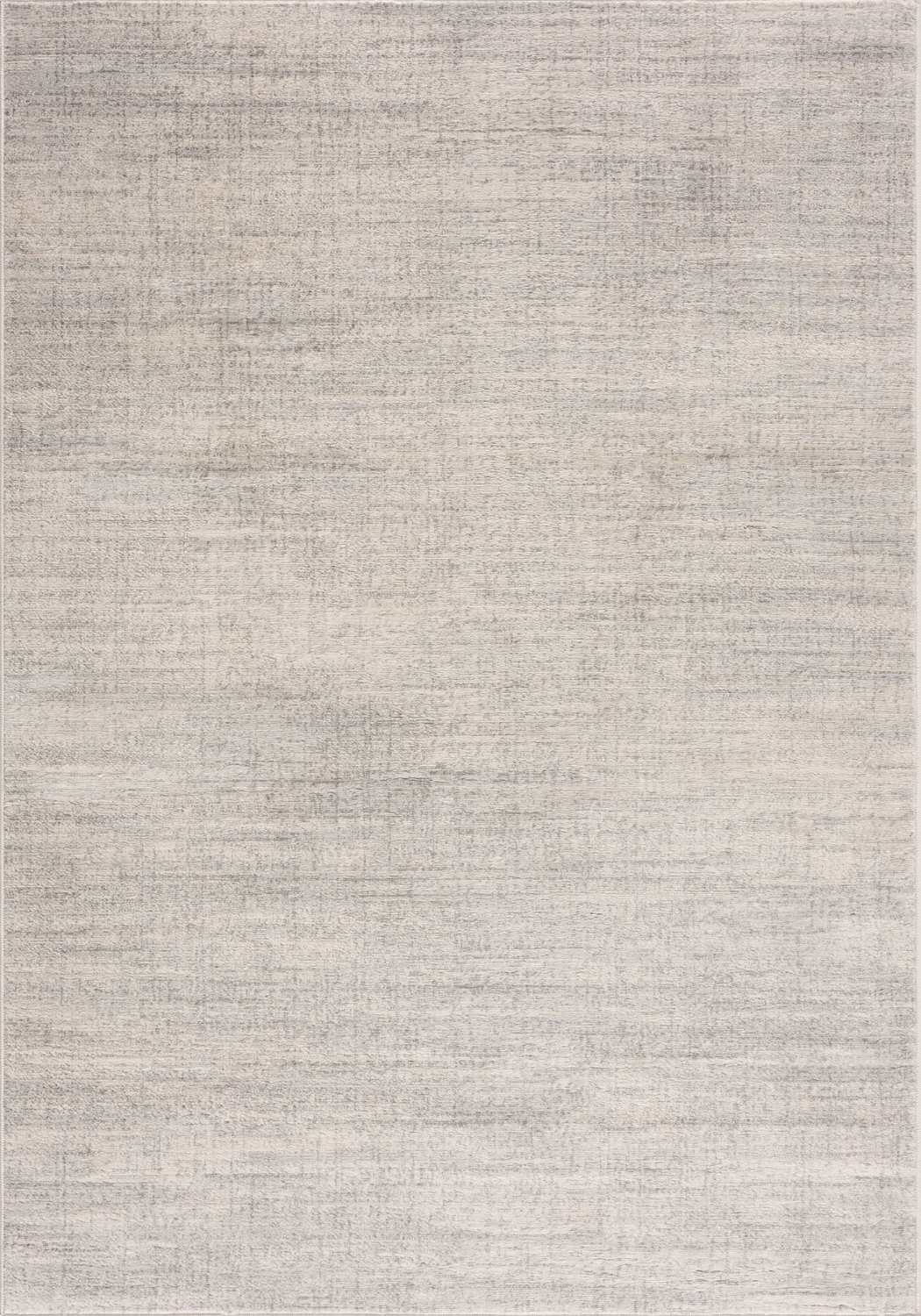
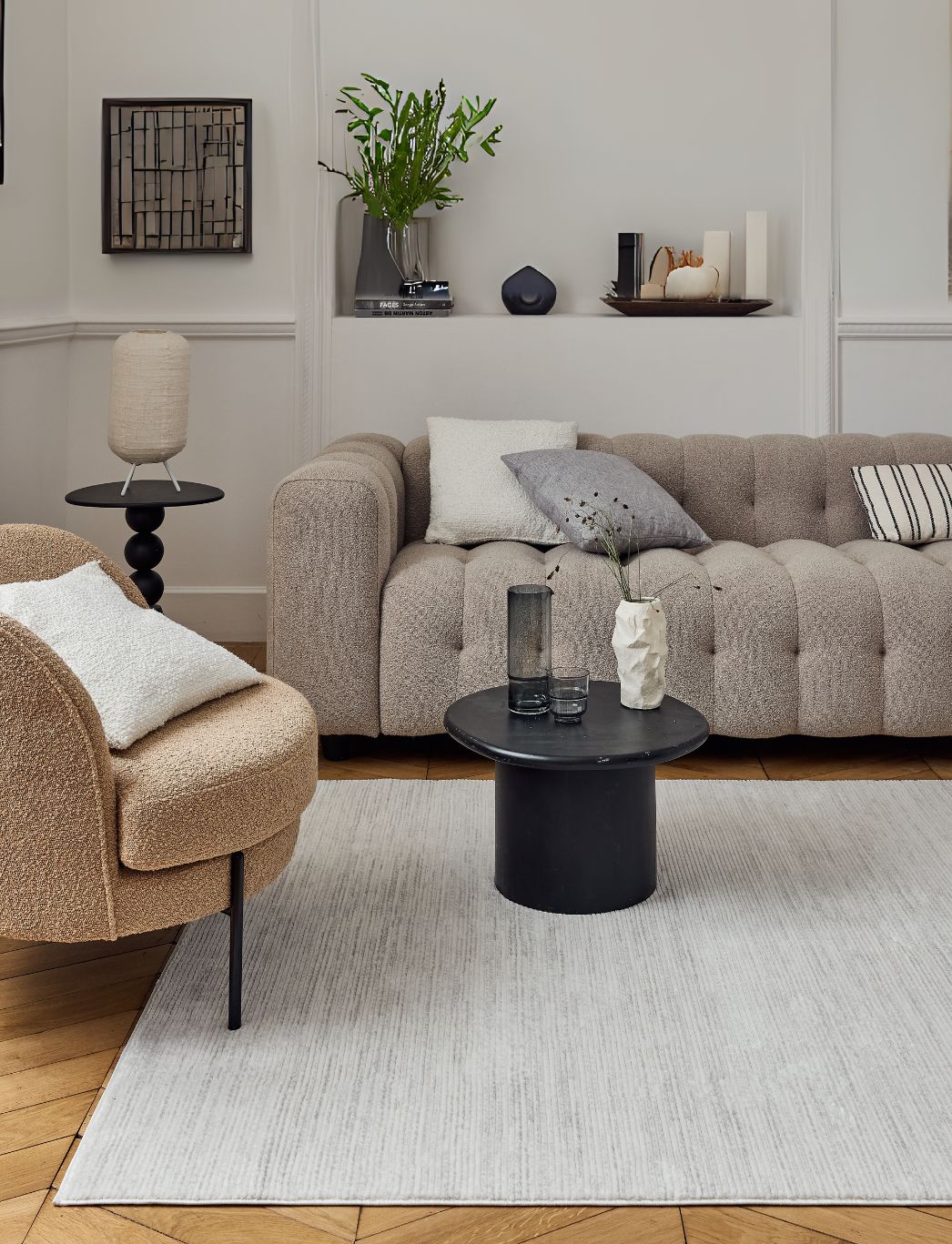
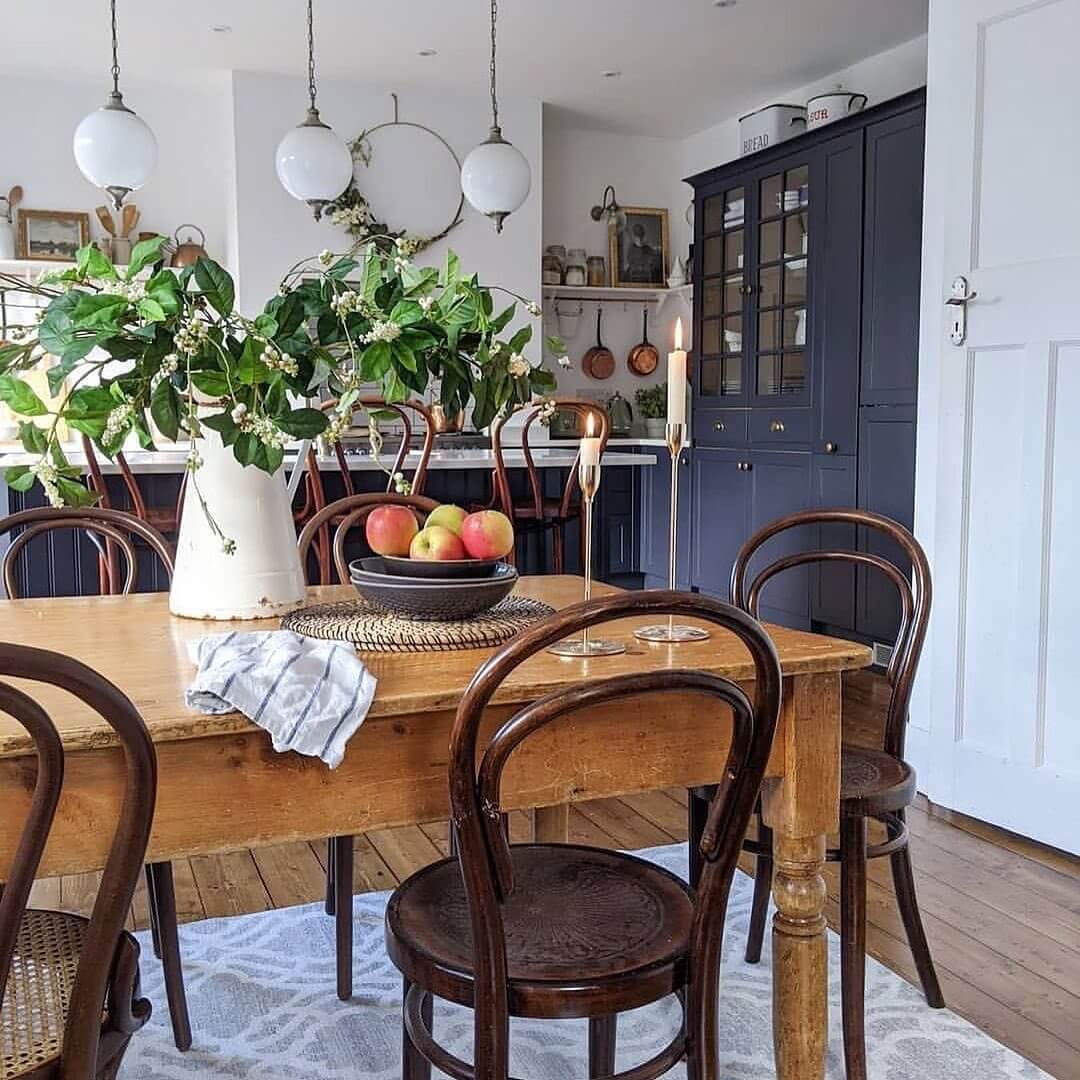
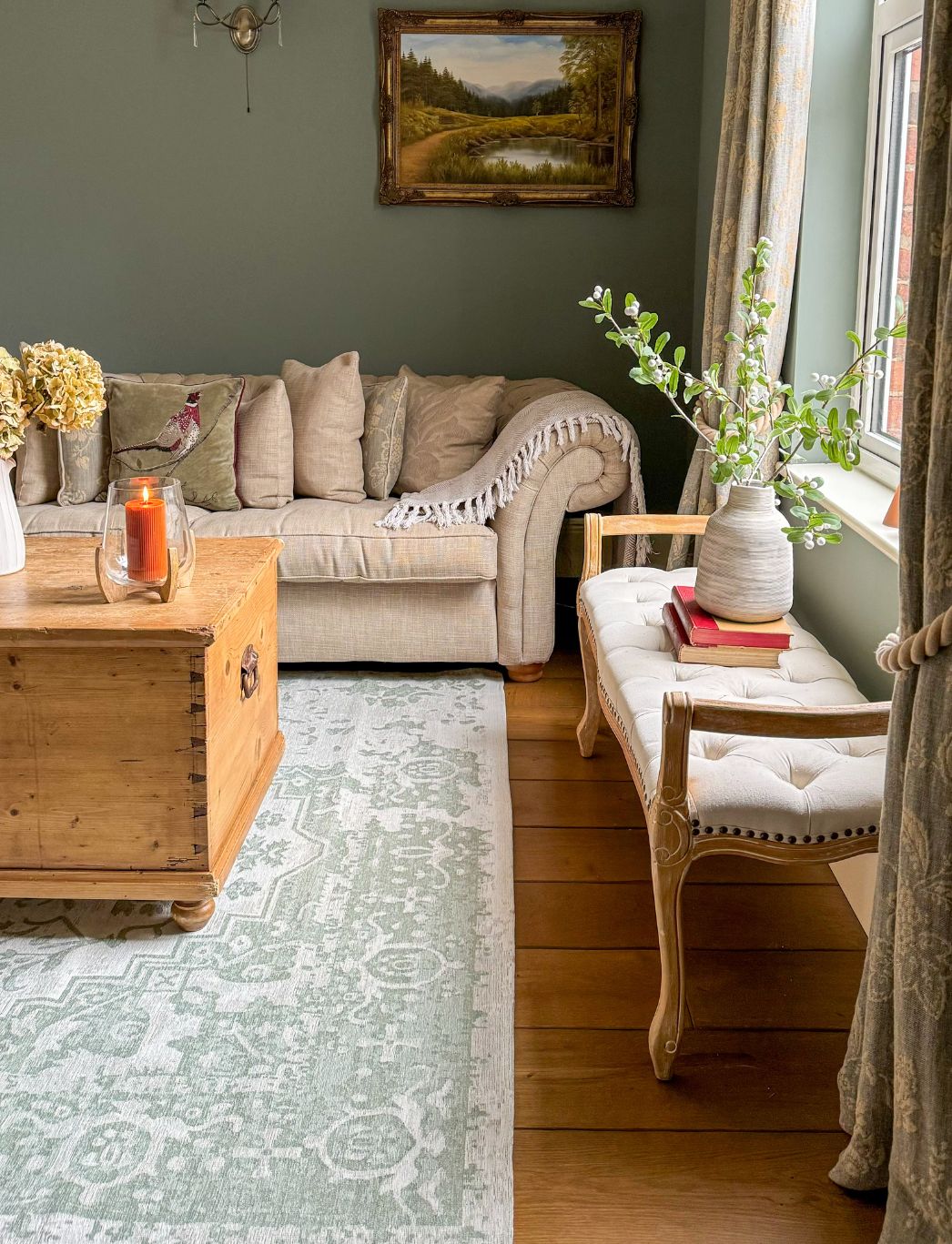

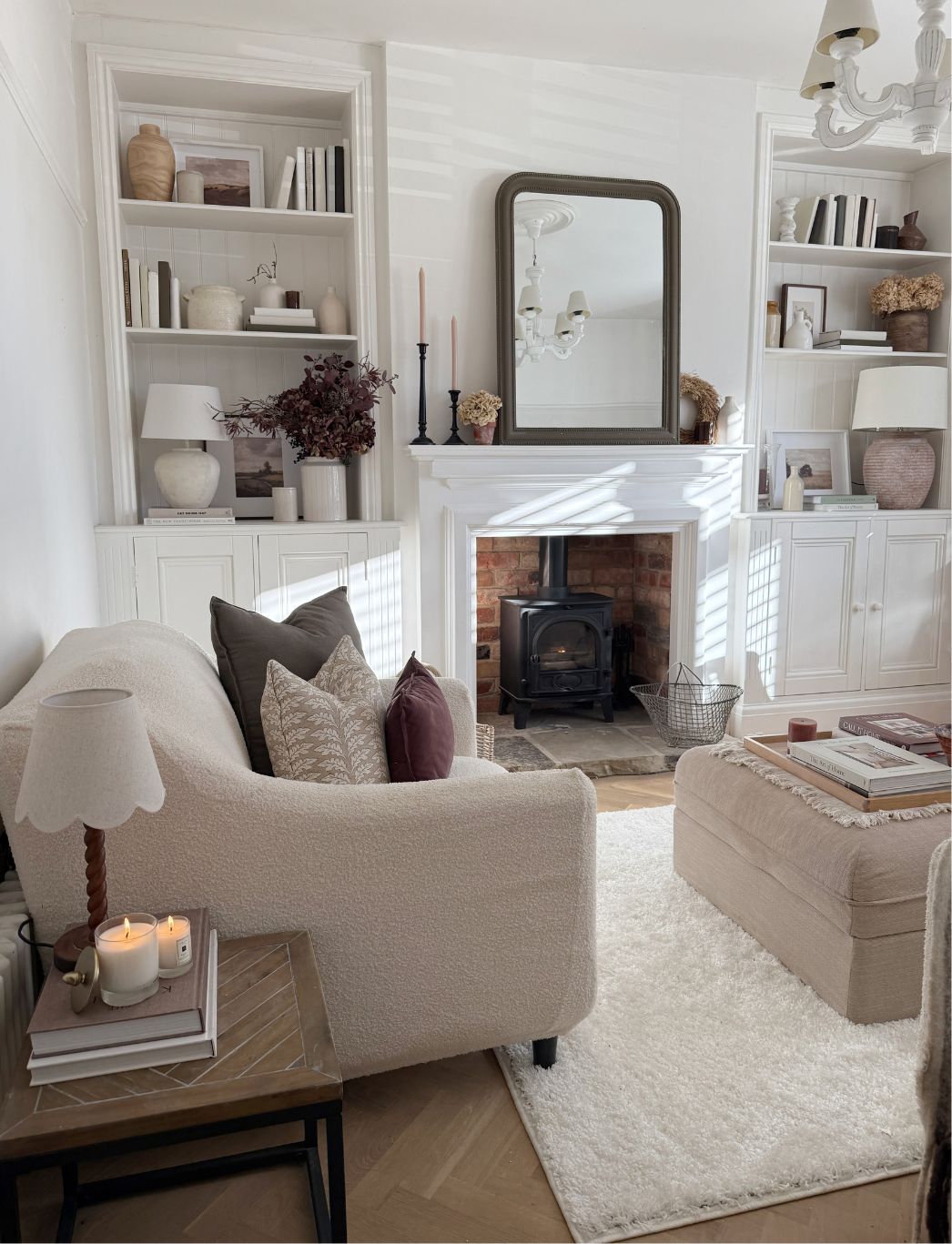
Leave a comment